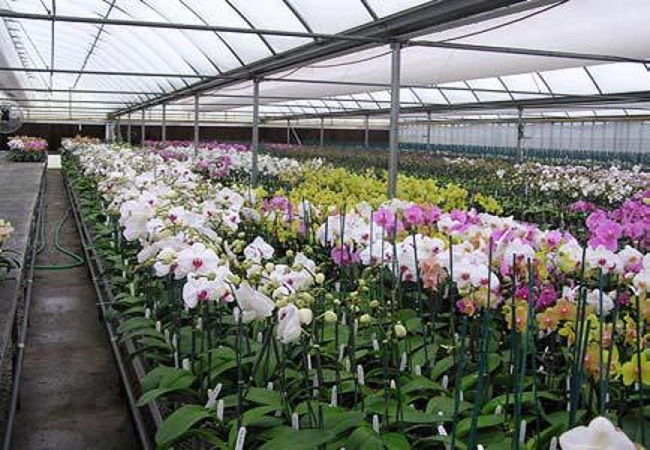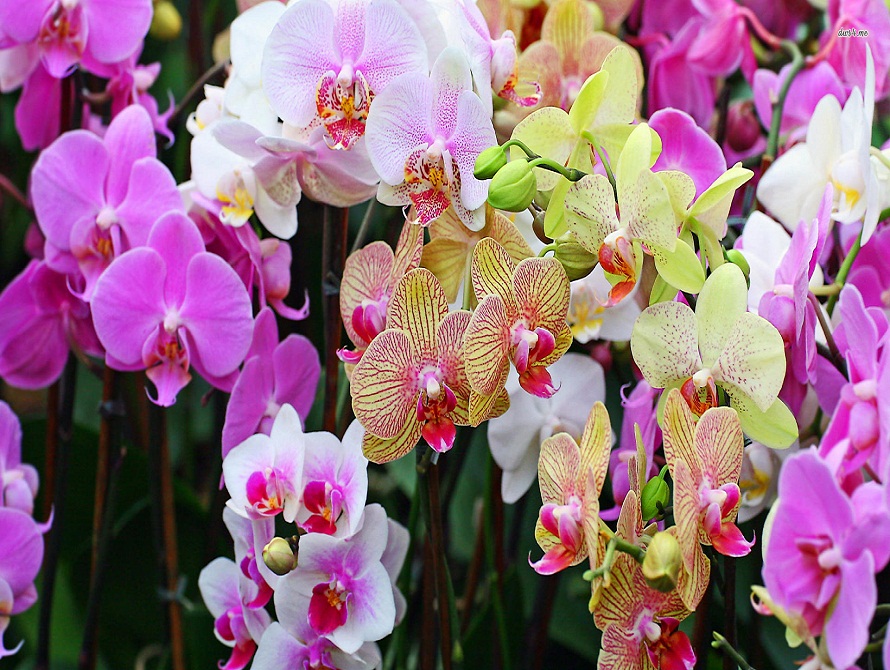All the techniques to preserve and maintain your Orchids. I give you all advice to make you enjoy this plant longer. Light, watering orchids, temperature, specificity, growth, all these aspects will have more secrets for you. In the natural state, orchids grow in branches and on tree stumps / trunks, moss, rocks, and usually near a stream or river to combine heat and humidity.
Orchids need a lot of light
By nature, orchids need a lot of light in our latitudes, unlike their country of origin (Thailand,) where they often grow in shady areas because the sun is too intense. However, attention must be paid to how to position them according to the season. Indeed, the luminosity being different, it is important to change the position of the orchids according to the seasons . In summer, prefer to place the orchid away from the sun’s rays that tend to burn the leaves. The place chosen must remain very bright. If your windows have a veil or a blind, this may be ideal, but think about avoiding prolonged shadows . If you have the opportunity, give them a sunbath for a few hours. In winter, position your orchids near a window where in a brightest place possible . The days being shorter and often with grisaille, it is necessary to give the plant the possibility to catch a maximum of light. If some days are sunny, do not be afraid to leave it in the sun. However, avoid areas of drafts and changes in temperature.
How to spot a lack of light on an orchid?
When the orchid lacks light, the plant tends to form leaves that are longer and shorter than the previous leaves. The objective for the plant is simply to go to capture more light.
At what temperature should an orchid be preserved, what level of hygrometry?
The temperature for orchids in the greenhouse is between 20 and 30 ° C during the day and between 18 and 25 ° C during the night with a hygrometry between 50 to 80% (ideally). However, it is very rare and even contraindicated to have a high level of hygrometry in your apartment or house. To compensate for this lack of moisture, you can position your orchid on a basin filled with water and volcanic rock . With the warmth of your home and the evaporation generated, it will have the effect of creating a micro-climate around your orchid. If you can, add an aquarium heater (with a thermostat) in the bowl to speed up evaporation. However, with crosses, orchids are more resistant and adapt more easily to cooler temperatures provided they do not go too low and too long. In this case, pay attention to watering your orchid to avoid for example coupling cool temperatures and too frequent watering. the right temperature to keep an orchid is between 20 and 25 ° C . Reminder: To conserve your orchids, it is necessary to couple heat, light, humidity, but avoid to water too much (do not leave stagnant water at the foot of the plant) –
Watering Orchids: How and how often to water the Phalaenopsis?

The frequency of irrigation of orchids must take into account various factors such as temperature, roots and the type of substrate used or whether the plant is blooming or not. As we have seen above, it is advisable to keep the orchids at temperatures between 16 ° and 25 °. This implies that it will be necessary to water the orchid about 1 time every 10 days in period of flowering and every 20 days approximately when the orchid is deflowered. To water an orchid, pour plenty of water into the pot to dampen the plant and then drain the pot . The roots then gray rehydrate and become green again in a few seconds. Above all, avoid leaving stagnant water that would cause the roots to rot. When watering, you will also need to consider the size of the roots and the pot. If your orchid has many roots this will tend to retain moisture. It will therefore be necessary not to water too much to prevent the roots from rotting. Consider also the type of substrates (usually copal, substrate), because the drying will be longer or shorter. In addition, limestone water must be avoided. The golden rule and never too much water the orchids because it would be fatal. This is also the case with many plants.
How to spot over-watering?
To know if an orchid is too watered, look at the plant pot to see if it is too wet and check if the roots begin to rot. This is the most effective way to spot the Phalaenopsis at too much water. If you spot an over-watering, quickly dry the roots and roots. Tip: Add lemon juice in small quantities in water for orchids to reduce the effects of limestone and add acidity (orchids like that!). In addition, to reduce the limescale, you can use a “Brita” decanter that filters the water . As mentioned, the frequency and dosage of watering is a difficult thing to evaluate. The advice given is for information purposes and gives you some maintenance techniques to respect. In any case, you will be able to judge the frequency of watering according to the environment of the orchid (positioning, temperature …). Orchids are flowers that are highly prized by all of us. Very appreciated to decorate an apartment, to offer a gift … They will also be ideal for the floral decoration of an event

